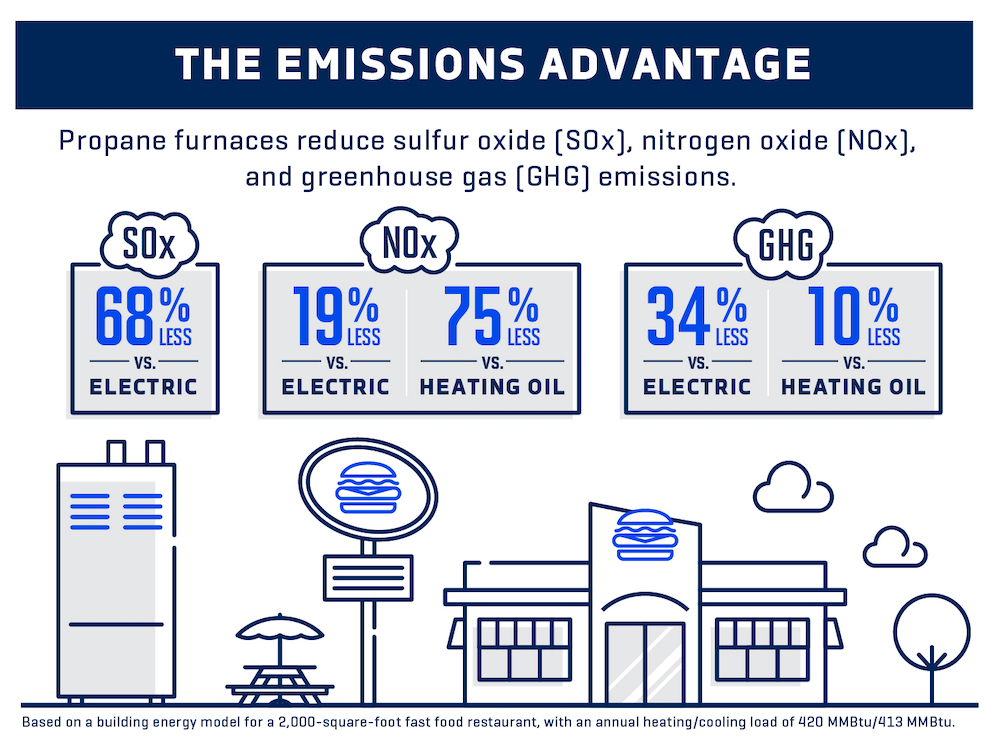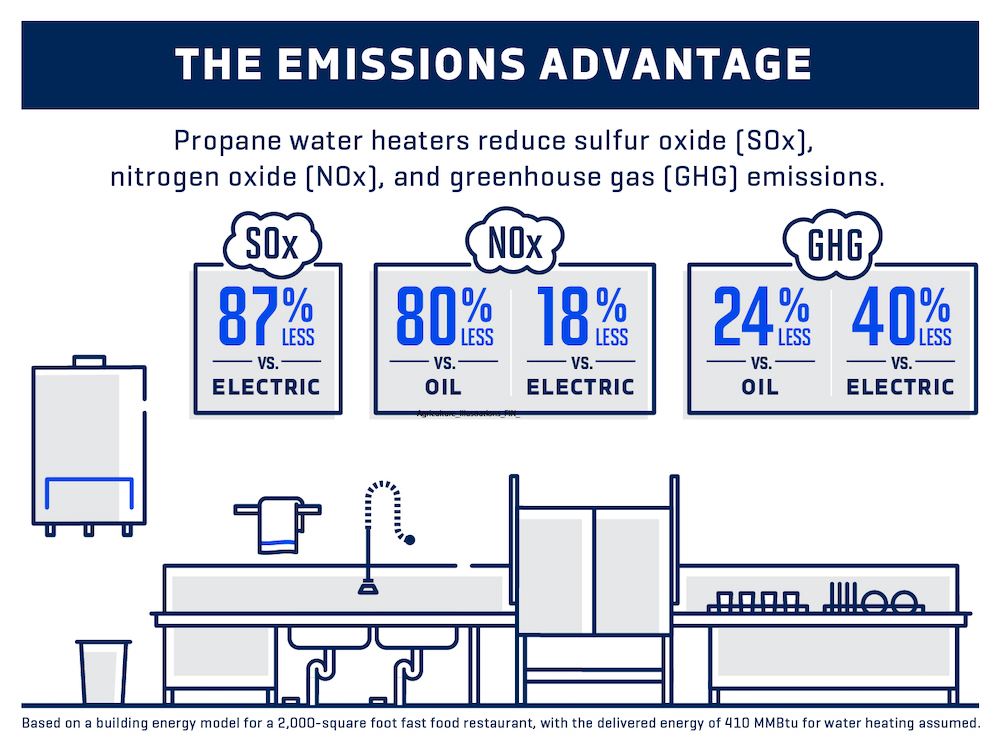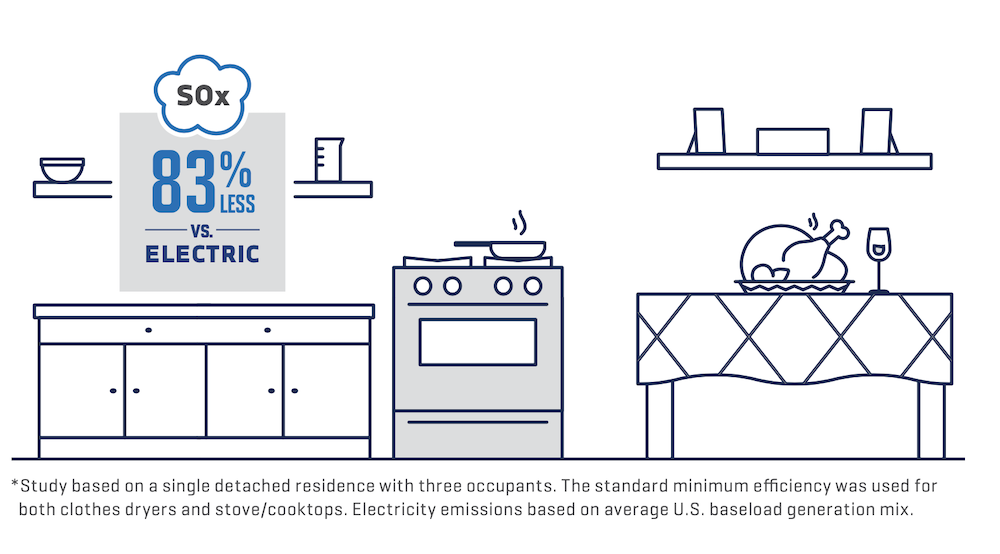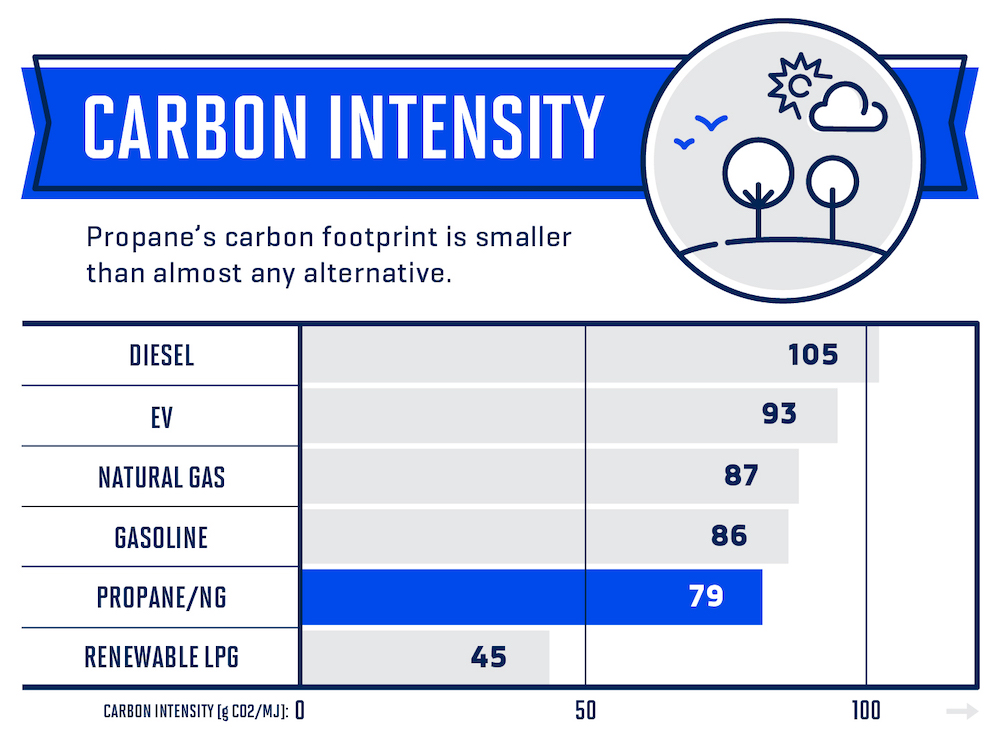Propane: Cleaner. Renewable. Affordable.
A low carbon future is good both for the planet and its inhabitants, and propane is an important part of low carbon energy solutions both today and in the future. That's right. Propane.
Electricity is not the only solution. Propane is lower in greenhouse gases and is more affordable.
One of the best kept secrets in the conversation about the environment is renewable propane. That's right. Renewable.
The videos and graphs on this page explains how a cleaner, renewable energy like propane will accelerate decarbonization and provide equity on the path to zero.
Propane Home Appliances are Cleaner and Less Expensive
Environmentally conscious and economically conscious homeowners can reduce their emissions and energy costs for space heating, water heating, clothes drying and cooking by using propane instead of electricity. Here are some performance differences between propane and electricity for sulfur oxide, greenhouse gases and nitrogen oxide:
- Space heating: Propane produces less greenhouse gases, nitrogen oxides and sulfur oxides than electricity. Propane’s better energy efficiency and lower cost for 100,000 BTUs also makes it more economical.
- Water heating: Propane produces less nitrogen oxides, sulfur oxides and greenhouse gases than electricity. Once again, propane’s better energy efficiency and cost for 100,000 BTUs can help cut your energy bills.
- Clothes Drying: Propane produces 42% less greenhouse gases than electricity.
- Cooking: Propane produces 83% less sulfur oxide than electricity. Of course, propane also gives homeowners a much better cooking experience. When’s the last time you saw a chef preparing a dish on an electric stove?
So what does all of this mean? Why do sulfur oxide, greenhouse has and nitrogen oxide emissions matter? Here are the thumbnail, plain English explanations:
- Sulfur oxide: Sulfur dioxide and sulfur oxides in general are often referred to as "SOx." They are believed to aggravate pre-existing respiratory conditions, especially in young children and older adults. Longer exposures can aggravate heart and lung conditions. Sulfur dioxide also is one of the culprits in smog formations, which limit visibility and cause eye irritations. In addition to human health impacts, sulfur oxides contribute to acid rain, which negatively impacts plant life and water ecosystems.
- Greenhouse gases: Greenhouse gases help the earth retain heat and make it livable. In the right balance. Too much greenhouse gas makes the earth too warm; too little greenhouse gas makes the earth too cold.
- Nitrogen oxide: Nitrogen dioxides and nitrogen oxides in general are often referred to as "NOx." Nitrogen oxides are believed to the formation and modification of other air pollutants. Nitrogen oxides may impact or aggravate respiratory illnesses in populations and have been associated with asthma and allergic reactions in controlled studies.






